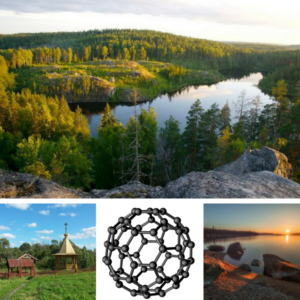Here is a short summary of the rich and intriguing shungite history.
 Wonderful healing properties of shungite (also schungite and shungit, and ‘шунгит’ in Russian) have been documented since the XVI century, when Peter the Great’s great-grandmother, exiled from Moscow to a far-away land of Karelia, was cured of an illness by the water from a shungite spring. Peter the Great was well aware of the shungite properties and made it obligatory for each Russian soldier to carry a shungite stone with them for wound healing and water purification. In 1713, Peter decreed that the first Russian spa was to be built on shungite springs. Peter wrote in his Decree: “Our Lord himself, out of his mercy for us, has bestowed this healing stone on our people”.
Wonderful healing properties of shungite (also schungite and shungit, and ‘шунгит’ in Russian) have been documented since the XVI century, when Peter the Great’s great-grandmother, exiled from Moscow to a far-away land of Karelia, was cured of an illness by the water from a shungite spring. Peter the Great was well aware of the shungite properties and made it obligatory for each Russian soldier to carry a shungite stone with them for wound healing and water purification. In 1713, Peter decreed that the first Russian spa was to be built on shungite springs. Peter wrote in his Decree: “Our Lord himself, out of his mercy for us, has bestowed this healing stone on our people”.
Schungite was well known in Russia for centuries as a crystal that heals wounds, purifies water, restores tissues and aids growth. One of the unique features of shungite is that it absorbs and transforms everything that is harmful to life, and strengthens and restores everything what is good for a living thing.
Less than 20 years ago the mystery of shungite found a sensational scientific explanation. In 1996, a group of scientists from the UK were awarded a Nobel prize for discovering a unique molecular structure, called “fullerene”. Due to their unique structure, fullerene molecules possess amazing life-boosting qualities. For example, in interaction with water fullerenes behave as the most powerful and long-acting antioxidant. A short time after the discovery of fullerenes came a discovery that shungite is the only natural mineral, at least known currently, which contains fullerenes in it. This explains why shungite springs in Karelia are famous for healing skin diseases, wounds, burns, cure allergies, stomatitis, periodontitis, etc. Properties of fullerenes are now actively researched in various laboratories throughout the world with a view to harness their healing power.